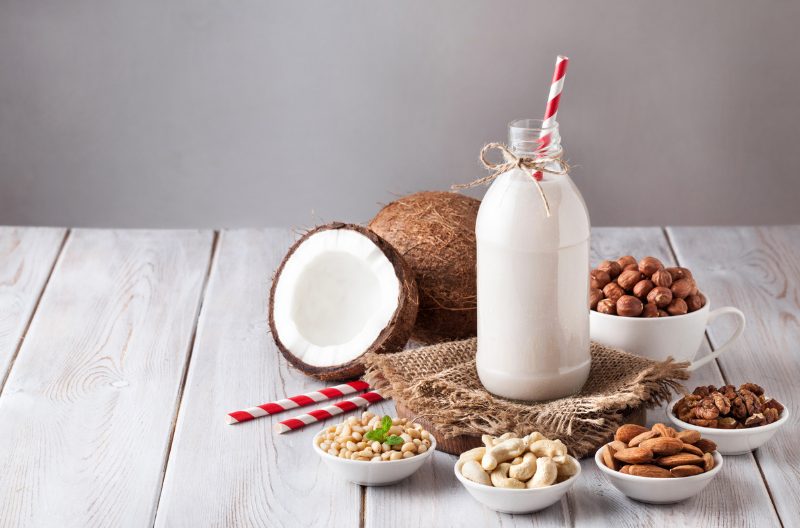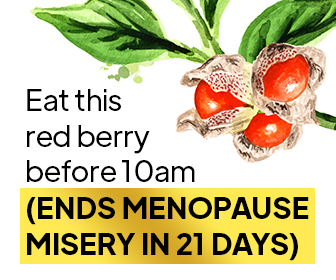It’s comforting to dunk a warm cookie into a glass of milk after a long day. But with so many varieties now available, it’s getting more complicated to decide what kind of milk to pour in your glass. You no longer have to settle for cow’s milk alone, or any animal milk at all for that matter!
Whether you’re a vegan, have an intolerance, or are simply looking to explore the different flavors available to you, there are countless types of dairy-free milks out there. All of them have their own unique taste and benefits. So, which is the best milk alternative for you?
We broke it down so you can understand the different types of milk on the shelves and their defining health benefits. From the most popular milk alternatives like soy milk, to newer variations like pea milk, you’re sure to find the best one for your specific needs. Now, let’s dive into the healthiest options!
What is Non-Dairy Milk?
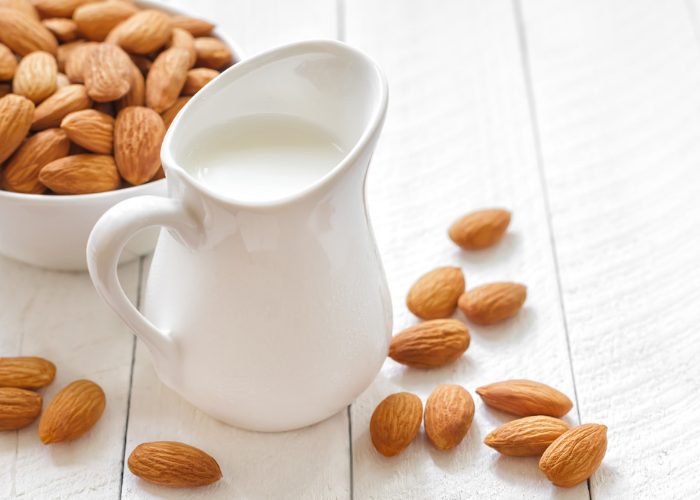
Non-dairy milk is a type of milk that does not contain any lactose. It is made from plant-based sources, usually nut, seed, or grain-based.
“Milk can be made from plants?” Yes! But you should be careful, the non-dairy milk products you find in stores are not always 100% free from all dairy ingredients. According to the U.S Food and Drug Administration, the “non-dairy” label still allows products to contain milk proteins and other milk derivatives.[1] For example, casein and whey are two components of cow’s milk that are legally permitted in products marketed as “non-dairy”.
How Do I Know if Casein or Whey Are in My Non-Dairy Products?
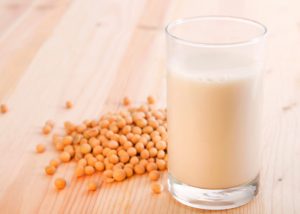
To start, you should know that there’s nothing wrong with casein or whey, as long as you are not vegan. They are both naturally occurring proteins in cow’s milk. In fact, many people use them in milk-form as part of a healthy diet and workout regimen.
However, for people who are allergic to milk or milk proteins, the non-dairy label can be misleading. Casein and whey are often found in non-dairy powdered creamers or protein mixes.[2] So, remember to be conscious of the ingredients the next time you stir in that vanilla powder with your coffee.
Additionally, about 2.5 percent of children under the age of three are allergic to milk, which includes these milk proteins.[3] This can trigger fatal immune system responses, like anaphylaxis shock.
So, if you or a loved one want to avoid animal products altogether or are allergic to milk, you should double check the ingredients. Educate yourself on the different names of milk ingredients hiding in products.
Tip: Be a detective! Remember to always check the ingredients. If you have allergies or want to stay away from animal products, NEVER trust the label before looking into it yourself.
How Does Non-Dairy Milk Differ From Dairy-Free Milk?
There are two main differences between “non-dairy” and “dairy-free” milk labels:
- Non-dairy milk is FDA regulated, whereas dairy-free products are not.
- While non-dairy milk may contain some animal proteins, dairy-free milk typically does not have any animal products.[4]
Even though dairy-free product labels are not FDA regulated, the term is still widely used and trusted to differentiate between products that are vegan or not.[5] Still, this means you can never be 100 percent sure of what’s in your non-dairy milk just by looking at its cover. Always read the label before buying, or try making some easy milk alternatives yourself!
Why Drink Milk Alternatives?
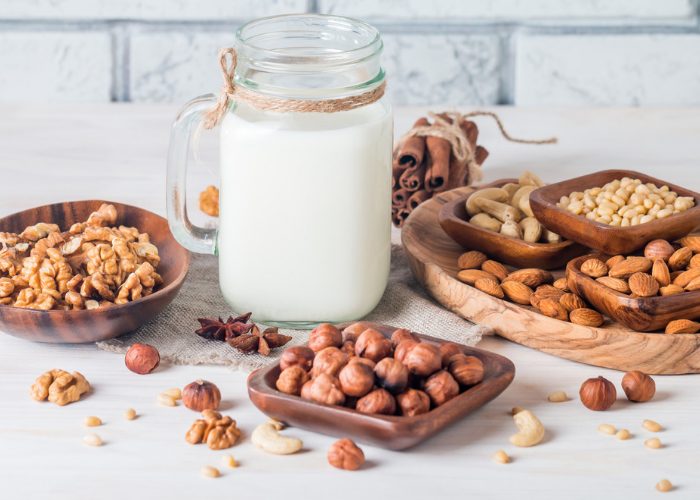
Like most things, drinking regular dairy milk in moderation is perfectly fine. Cow milk contains about eight grams of protein per cup, which is undeniably higher than some milk alternatives.[6] However, the lactose and
Today, people drink milk alternatives for a number of reasons varying from health, to animal/environmental rights, to taste preferences. In the U.S, dairy-free milk sales have increased over 61 percent in the last five years,[7] proving just how food-conscious people are becoming. Eating a vegan diet is also now more common than ever.
If you’re interested in them because you want to live a more nutrition-conscious life, be careful not to fall into “the sugar trap.”
Flavored and sweetened milk alternatives are less health-conscious as unsweetened varieties. It’s up to you if a few extra sugar calories bother you, but if so, find the “unsweetened” label on the carton.
What Are the Best Non-Dairy Milks?
Almond Milk
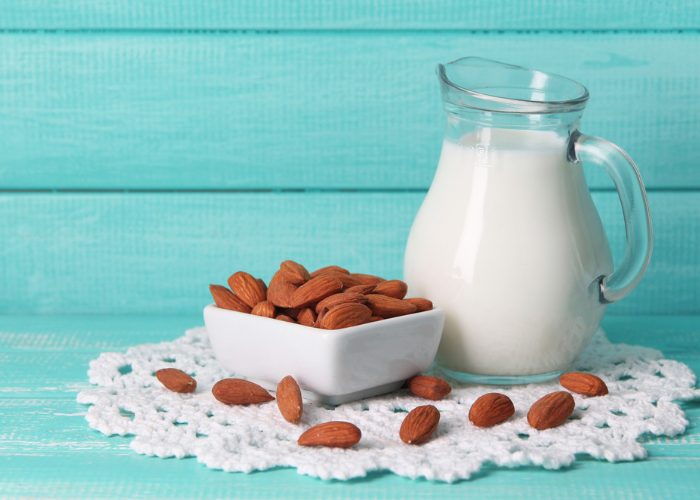
Arguably the most similar in taste to cow’s milk, almond milk has many health benefits. A glass of almond milk has about 52 percent of your daily calcium needs.[8] That’s way more than a glass of two percent dairy milk, proving that cow’s milk is not the only way to develop strong bones. Almond milk is easily digestible for those with sensitive stomachs and feels light, yet filling.
It’s also a great replacement for dairy milk in many delicious recipes, without risking a huge change in taste or consistency.
But what most people don’t know is that almond milk is not the most environmentally-friendly milk alternative. Nearly 80 percent of the world’s almonds come from California, where there is currently a drought.[9] Producing 1 California almond takes about 3.2 gallons of water in the U.S.[10] That means a standard liter of almond milk needs around 883 gallons of water.[11] It’s packed with nutrition, but at a price.
Soy Milk
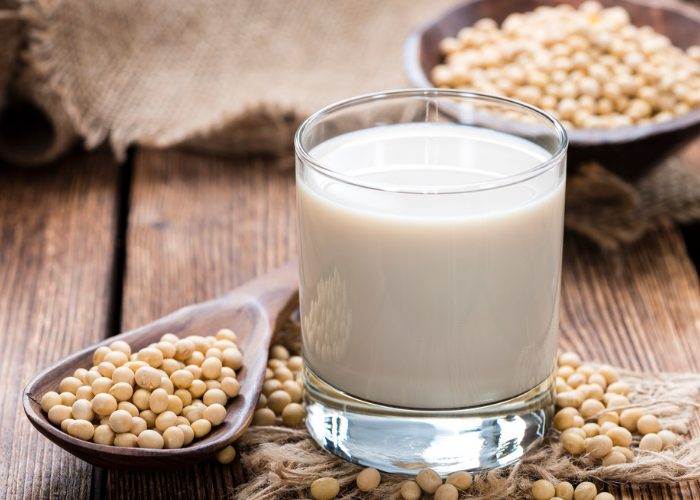
Soy milk is currently the most popular of all milk alternatives,[12] with almond milk a close second. It’s rich in minerals and one of the first switches you can make to reduce cholesterol levels, making it popular among heart disease patients.[13]
Soybeans themselves support reducing blood pressure. A study comparing soy milk to cow’s milk proved that drinking soy milk drastically lowers blood pressure in those suffering from hypertension.[14]
But that’s not all, we have another win for soy coming up. A study by the Journal of Nutrition explained that soy intake in childhood reduces the risk of breast cancer or breast cancer recurrence, although the reasons for this are not scientifically clear just yet.[15]
So, grab a cold glass and sip away. But keep in mind, soy milk has a slightly earthy taste that can be off-putting. One way to make the transition easier is to buy vanilla soy milk first, then gradually wean yourself off of it to the regular version.
Coconut Milk
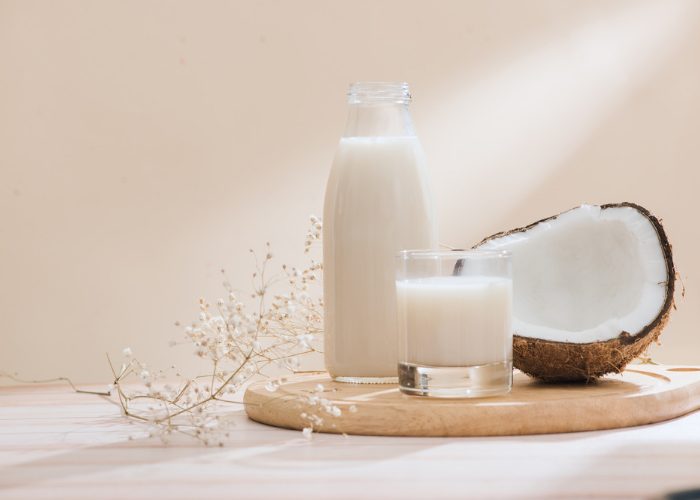
There’s something so fun about coconut milk. The flavor and aroma both have light hints of coconut, which makes each glass feel like a tropical getaway! While it’s higher than other non-dairy milks in fat content, it’s still lower than cow’s milk.
Although we have been warned against saturated fats, the saturated fats found in coconuts are actually medium chain fatty acids.[16] The properties and metabolism of these fats are different to those of animal origin, and are safe to eat/drink — in moderation of course.[17] They even help you stay fuller for longer.[18]
Additionally, it’s great for those with allergies because it tested as the lowest immune reactor of milk alternatives in a recent study.[19]
Full-fat coconut milk is super thick and creamy, making it an excellent addition to any pan-stewed Asian dishes like chickpea curry or Thai soups. Take your dishes to a whole other level by adding in a splash of coconut milk.
Hemp Milk
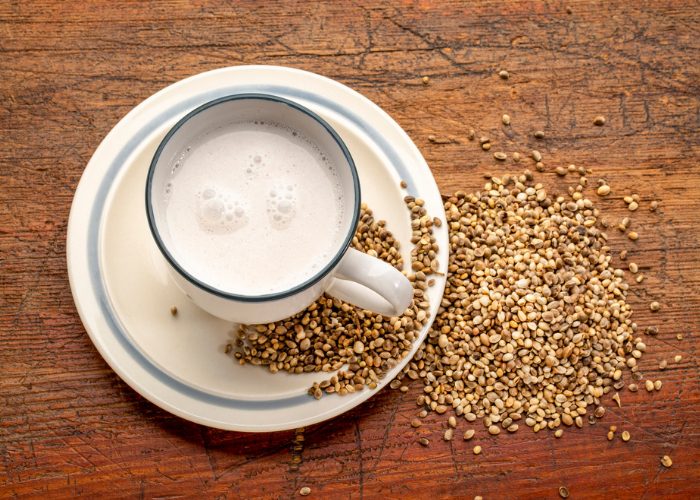
This non-dairy milk is soy, gluten, and nut-free for those who have more than one allergy. Hemp is an amazing seed that is so versatile on its own. When turned into milk, you still get all the amazing protein and nutritional pack of hemp, along with its signature nutty flavor.
Hemp milk has a complete amino acid profile. On top of that, it contains omega-3 fatty acids, which are notoriously harder for vegans to consume without an animal-based diet.[20]
Yes, hemp does come from the same plant known for its THC and green leaves. But rest assured, drinking this milk is completely safe and there are no lingering effects except a happy tummy.
Fun Fact: You can make these milk alternatives at home with a blender and save the leftover pulp for cookies, bread, or a face mask!
Rice Milk
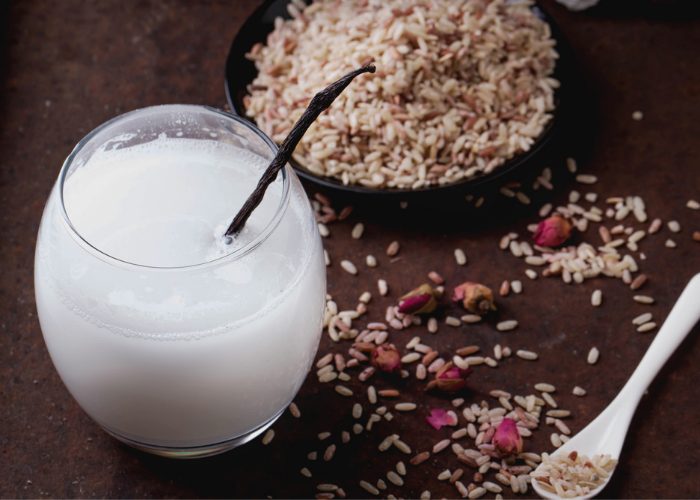
Rice milk is one of the more controversial dairy-free milks out there, you either love it or hate it. The consistency leans more towards watery, especially in comparison to coconut milk which is thick and creamy. But, unlike coconut milk, one cup of rice milk has zero saturated fats.[21]
However, the nutritional value of rice milk is nearly as low as its fat content. It has fiber, but nearly no protein or calcium unless it’s supplemented.[22]
Rice milk is great as a neutral-tasting liquid in recipes, like rice pudding or horchata. It’s also perfect to use as the sealing liquid for pastry dough, whether baked or fried. Otherwise, rice milk doesn’t bring much to the table in comparison to the other milk alternatives out there today. It’s mostly known for its neutral flavor and low-calorie count.
But take note, making this milk at home allows you to control the thickness. Adding in less water to your blender will make for creamier milk.
Cashew Milk
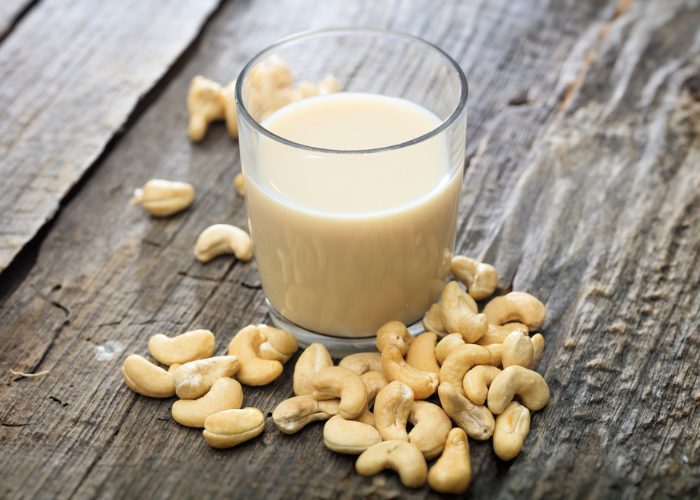
Cashews are packed with healthy fats and oils that are amazing for you, in moderation, of course. One study showed that pregnant rats that ingested cashew oils when pregnant produced offspring with better memory functions.[23]
Furthermore, 100 grams of raw cashews contain over 18 grams of protein. Just be aware that if you buy cashew milk from the store, you might be getting less than one gram of protein per 240ml.[24] So, if
However, store-bought cashew milk can still be delicious in a Pad Thai sauce or enjoyable on its own. It’s just worth a peek at the nutrition label to compare brands before you buy. This way, you can try and get the most nutritional bang for your buck.
Oat Milk
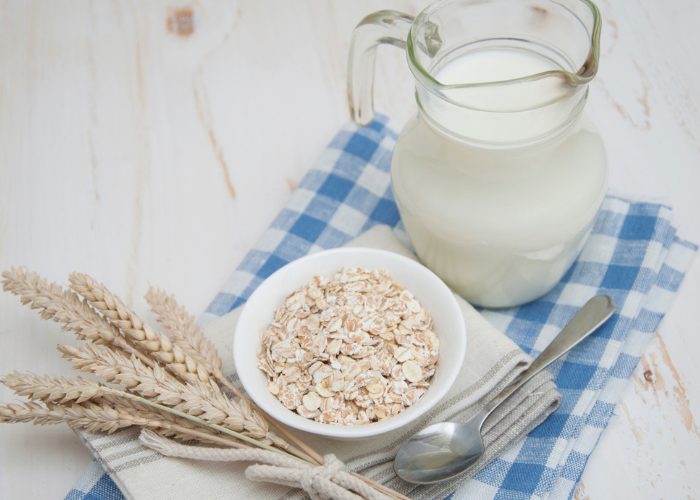
Oat milk has been steadily rising in headlines as an up-and-coming superstar. It’s a reliable option for those with nut or seed allergies.[25] It also might be one of the cheapest kinds of milk to make at home since the ingredients are simply oats and water, plus some vanilla or sweeteners, if you like.
On top of the wallet-related perks this milk offers, it’s also great for your body, coming in with about four grams of your daily protein and two grams of fiber per glass.[26] This thick and earthy milk’s benefits make it ideal for a morning smoothie to kick start your day.
Flax Milk
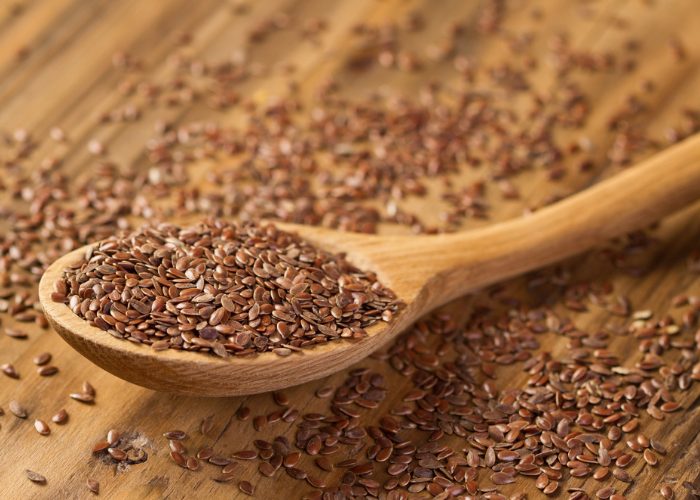
If you want to include more omega-3’s in your diet, you’re in for another win—flax milk is rich in them, but without having any saturated or trans fats.[27]
Flax seeds are nutty in taste, similar to hemp seeds, but higher in fiber content. It’s soy and gluten-free too.[28]
The only negative aspect of flax milk is that it’s naturally low in protein. However, some store brands supplement it with added protein, making flax milk one of the best milk alternatives to choose from.
Pea Milk
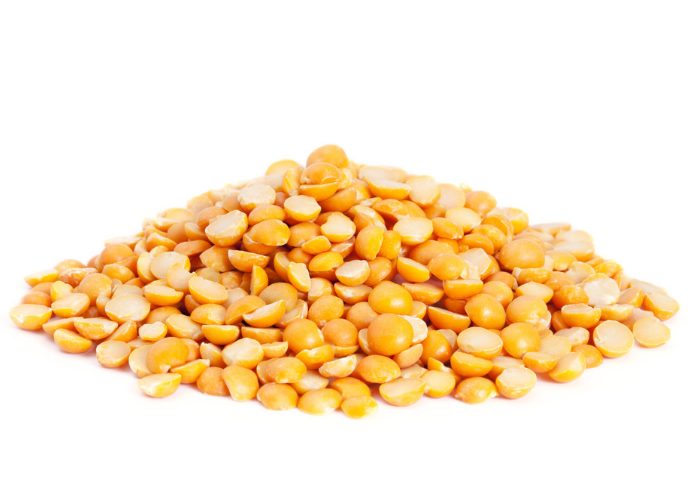
Peas and pea powders have been major players in the vegan world for a while now. Recently, pea milk made its debut, showering the world with its protein-heavy content.
Pea milk is made from yellow peas — so no, your cereal bowl won’t turn green! Yellow peas are high in protein and calcium. Not only that, but they’re pretty environmentally friendly too. While almonds require mass amounts of water to grow, yellow peas are already native to rainy areas. This means that they don’t require additional irrigation to grow. With less demand to drill for water, there is a more natural production process. This makes pea milk an eco-conscious option in your non-dairy milk hunt.[29]
It’s a bit more complicated to make this option on your own, so look out for pea milk in your local supermarket.
Walnut Milk
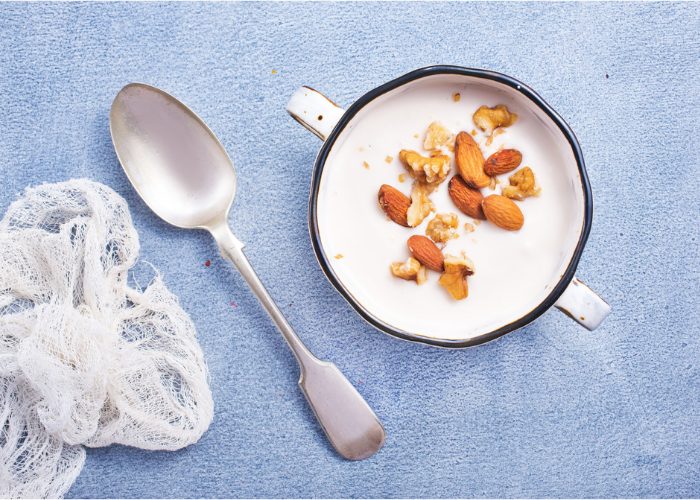
Walnuts are shaped like a brain for a reason: they’re great brain food! These nuts are high in healthy fats, plus they reduce the inflammation in brain cells, making them a good investment for a healthy mind in old age.[30] A diet with walnuts can decrease your chances of having neurodegenerative diseases later in life like dementia or Parkinson’s.[31]
Walnut milk is not far from how you’d imagine it — nutty and sharp, with a hint of bitterness if you don’t buy the sweetened version. It’s pretty comprehensive with many minerals and essential nutrients your body needs.
This milk thrives in pancakes and banana bread, where it can unleash its bolder undertones and add a layer of depth to your cakey goods.
Macadamia Milk
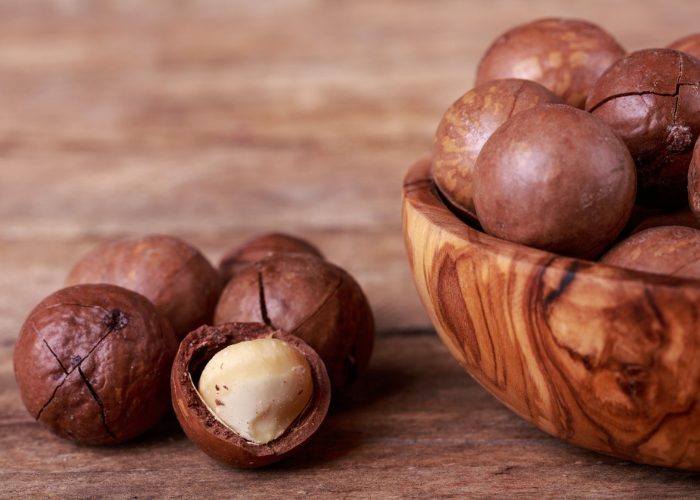
If you’re looking for one of the best milk alternatives to try, a smooth and decadent glass of macadamia milk tastes like a treat all on its own. Combine it with something sweet (like cocoa powder) or poured in a matcha latte and you’ll be coasting with happy thoughts the rest of the afternoon.
To make the best macadamia milk, you should toast the nuts in the oven. This unleashes their full flavor palette.
But unfortunately, oily nuts like macadamias have a bad reputation in the weight loss world. Listen here: these nuts won’t make you fat if you eat them in moderation. It’s actually the opposite. Macadamia nuts trigger a satiated hormone in your brain, making you feel full.[32]
If you’re watching your waistline, you might want to try this non-dairy milk. That is, as long as you trust you won’t drink the whole gallon at once!
Quinoa Milk
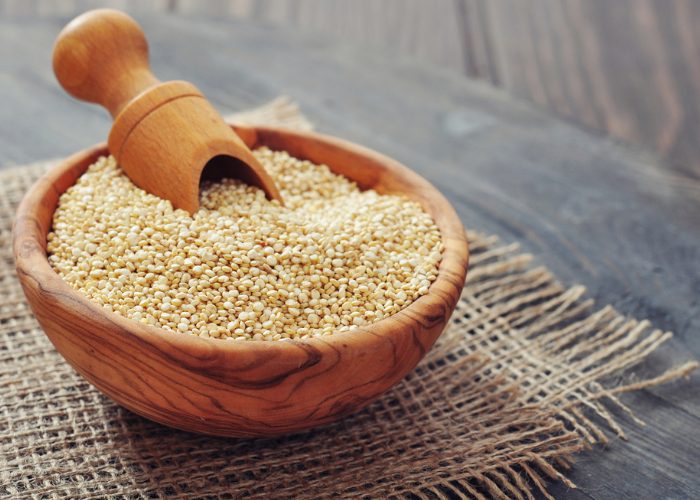
Quinoa: the superfood turned milk?
You heard us. The last one on our list of dairy-free milks consists of none other than quinoa. Quinoa has lots of protein and essential amino acids,[33] making it a great post-workout addition to
While it might not be the best tasting when plain due to the very quinoa-y flavor, it can be a match made in heaven for mixing in coffee. This can allow you to get a filling and protein-rich start to the day before you even eat your breakfast.
Tips for Picking the Right Milk for You
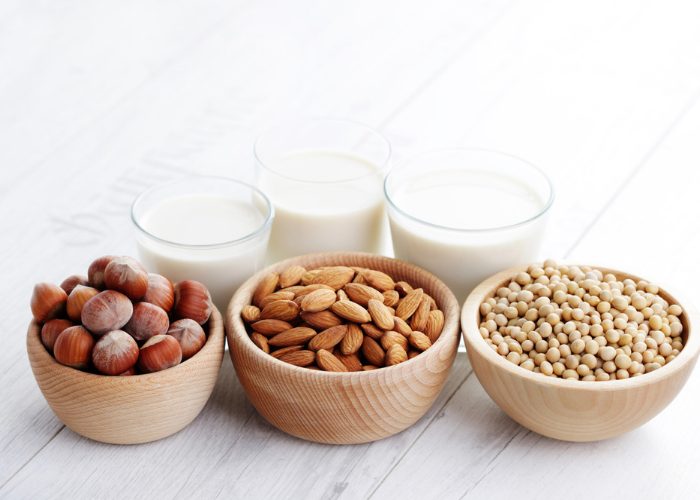
- Decide if you want low-calorie (rice milk), high protein (pea milk), or something in-between (hemp milk).
- Check the label for any allergies that may come with the production, like gluten, nuts, or even animal proteins, such as casein and whey.
- Taste a few versions on your first round. Try vanilla, unsweetened, and even chocolate flavor to find your perfect match!
How To Make Your Own Non-Dairy Milk
Non-dairy milk is not as difficult to make as it sounds. To make one liter of non-dairy milk:
- Throw a few handfuls of the main ingredient into a blender with four cups of water.
- Press pulse for a few minutes, noticing how the water turns milky white.
- Strain the excess pulp with a nut milk bag or mesh strainer.
- Enjoy your fresh milk, and store in a mason jar in the fridge for up to five days.
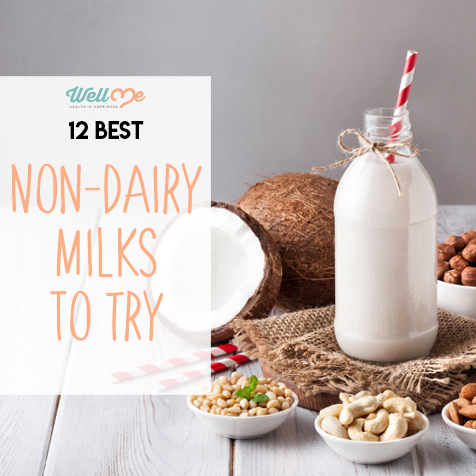
Conclusion
These are just a few of the healthiest non-dairy milk alternatives out there, and, no doubt, many more will continue to pop up in stores. There’s something for everyone, even the picky eaters.
If there ever was a time to try something new, it’s right now. Now go ahead, get that cookie and dunk it!
References
- [1] https://www.accessdata.fda.gov/scripts/cdrh/cfdocs/cfcfr/cfrsearch.cfm?fr=101.4
- [2] https://academicjournals.org/journal/AJFS/article-full-text-pdf/8D46FAB10975
- [3] FARE. https://www.foodallergy.org/common-allergens/milk-allergy
- [4] https://farrp.unl.edu/resources/gi-fas/opinion-and-summaries/dairy-free-and-non-dairy
- [5] https://www.foodallergy.org/about-fare/blog/this-blog-post-may-contain-food-for-thought-about-precautionary-allergen-labeling
- [6] FAO. http://www.fao.org/docrep/018/i3396e/i3396e.pdf
- [7] http://www.mintel.com/press-centre/food-and-drink/us-non-dairy-milk-sales-grow-61-over-the-last-five-years
- [8] https://ndb.nal.usda.gov/ndb/foods/show/4188?fgcd=&manu=&lfacet=&format=&count=&max=50&offset=&sort=default&order=asc&qlookup=almond+milk&ds=&qt=&qp=&qa=&qn=&q=&ing=
- [9] Ecological Indicators. https://www.sciencedirect.com/science/article/pii/S1470160X17308592
- [10] https://www.sciencedirect.com/science/article/pii/S1470160X17308592
- [11] https://www.sciencedirect.com/science/article/pii/S1470160X17308592
- [12] Grandview Research. https://www.grandviewresearch.com/industry-analysis/dairy-alternatives-market
- [13] https://academic.oup.com/jn/article/132/7/1900/4687377
- [14] https://academic.oup.com/jn/article/132/7/1900/4687377
- [15] https://academic.oup.com/jn/article/132/7/1900/4687377
- [16] https://www.researchgate.net/publication/6619085_Coconut_fats
- [17] https://www.researchgate.net/publication/6619085_Coconut_fats
- [18] Ceylon Medical Journal. https://www.researchgate.net/publication/6619085_Coconut_fats
- [19] https://www.ncbi.nlm.nih.gov/pubmed/30156521
- [20] https://med.virginia.edu/ginutrition/wp-content/uploads/sites/199/2014/06/January-18-Milk-Alternatives.pdf
- [21] Journal of Renal Nutrition. https://www.jrnjournal.org/article/S1051-2276(10)00012-9/fulltext
- [22] https://www.jrnjournal.org/article/S1051-2276(10)00012-9/fulltext
- [23] https://www.sciencedirect.com/science/article/abs/pii/S0736574817301958?via%3Dihub
- [24] University of Virginia School of Medicine. https://med.virginia.edu/ginutrition/wp-content/uploads/sites/199/2014/06/January-18-Milk-Alternatives.pdf
- [25] https://med.virginia.edu/ginutrition/wp-content/uploads/sites/199/2014/06/January-18-Milk-Alternatives.pdf
- [26] https://www.jrnjournal.org/article/S1051-2276(10)00012-9/fulltext
- [27] University of Virginia School of Medicine. https://med.virginia.edu/ginutrition/wp-content/uploads/sites/199/2014/06/January-18-Milk-Alternatives.pdf
- [28] https://med.virginia.edu/ginutrition/wp-content/uploads/sites/199/2014/06/January-18-Milk-Alternatives.pdf
- [29] https://med.virginia.edu/ginutrition/wp-content/uploads/sites/199/2014/06/January-18-Milk-Alternatives.pdf
- [30] Journal of Nutrition. https://academic.oup.com/jn/article/144/4/561S/4571638
- [31] https://academic.oup.com/jn/article/144/4/561S/4571638
- [32] https://www.cambridge.org/core/journals/british-journal-of-nutrition/article/nuts-source-of-energy-and-macronutrients/AAAEDDA038B08C0A00C802F00A7F4171
- [33] Journal of Cereal Science. https://www.sciencedirect.com/science/article/pii/S0733521016300662

